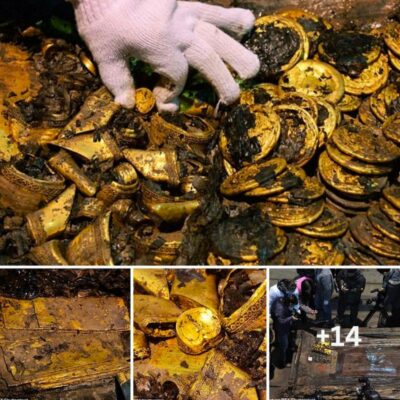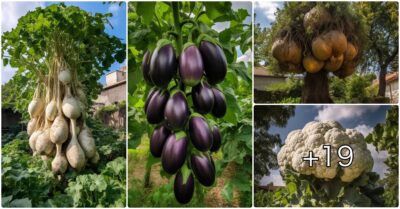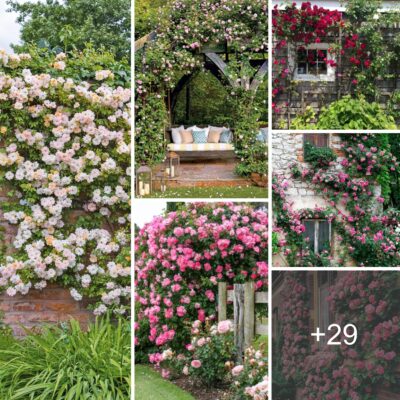Gardening advice has been passed from one gardener to another since we figured out how to grow things in the dirt. The truth is there’s a lot of bad advice out there. But there is some gardening advice that does more harm than good. Let’s take a look at some of the worst gardening advice that continues to get passed from gardener to gardener, year after year. Maybe we can put a stop to it and save ourselves some time and frustration.
1. “You Need to Rotate Your Crops Every Year.”

Let’s just jump right in with one that’s going to make a few people’s blood boil.
Crop rotation is one of those practices that came to use from commercial agriculture. And it makes sense on a large scale.
If you’re growing the same crop on the same piece of land (whose nutrient value has already been depleted by commercial farming) every year, you’re going to deplete the soil of certain nutrients. This kind of farming is incredibly hard on the soil, so crop rotation is an absolute must in this scenario.
But for home gardeners, most of us fertilize our plants throughout the growing season and add compost to our garden every year.
Gardening on this scale isn’t going to suck all of the nutrients out of your soil in the same way commercial farming does.
Now, that isn’t to say that you should never practice crop rotation as a home gardener. Rotating crops when one of your vegetables was hit by disease or pests can help prevent the same issue from popping up again next year.
But if rotating the crops in your garden year after year is beginning to feel like figuring out the seating for a large wedding reception, then, by all means, you can put this practice to bed.
2. “If You Use Compost, You Won’t Need to Fertilize Your Plants.”

You can’t read a gardening website without hearing about the many virtues of compost. And let’s be honest, for a pile of rotting stuff, compost does amazing things for your plants.
However, it doesn’t do everything.
Compost doesn’t have many of the necessary nutrients your plants need during the growing season. At least not yet. Compost is great for water retention and slowly adding nutrients back to the soil, all while improving the soil structure.
Your plants will need specific nutrients at different times during the growing season. And that’s where fertilizers come in.
Compost and fertilizer work together. Add both to your garden for happy, healthy plants.
3. “Using Soaker Hose is the Easiest Way to Water Your Garden.”
Oh, soaker hose, in theory, is pretty great. It saves you time, and everything gets watered at once.

You lay down the hose throughout your entire garden or raised beds at the beginning of the season. Then, whenever your plants need to be watered, you just turn the tap on for a few minutes. Ta-dah – a perfectly watered garden! Done. Boom. Relax.
Or not.
What if your lettuce looks parched and needs a drink, but your tomatoes will burst if they get any more water?
Hmm, a soaker hose doesn’t seem all that great then.
Watering your entire garden indiscriminately is a great way to end up with diseased and water-logged plants. Remember, every plant you’re growing has specific needs, and a one-size-fits-all watering system is going to make some plants happy while harming others.
Skip the soaker hose and pay attention to your plants’ individual needs. Probably the best thing you can do to keep your plants moist is mulch.
4. “If You Want the Best Garden, You Should Build Raised Beds.”
Come on; everyone’s doing it. You want to be one of the cool gardeners, right? Well, as great as raised beds are (and they are pretty great) for many people, there are still some good reasons not to garden with them.

5. “Tilling Your Ground Is Important to the Health of Your Soil.”

Hoo-boy, this one has been handed down for millennia. Some of humankind’s earliest tools were tools to work the earth. Cutting into the soil adds air, it helps cut up and kill weeds, and it mixes in any soil amendments we might be adding.
Okay, but what about raised beds? They seem to grow just fine each year without running a rototiller through them. Or how about, I don’t know, nature. Plants seem to grow just fine out there in the wide world without us tilling up the forest and every meadow.
Hmm.
It’s only recently that we’ve begun to see the damage we do to the soil when we till. This is one area where we can actually study what’s going on down there, just beneath the sod. And it turns out quite a bit. The microbial life that inhabits the soil is mindboggling.
Unfortunately, we’re finding that tilling the earth does more harm than good.
Let’s take a look at the most common reasons for tilling your garden.
- Aerating the soil
- Yup, this one is important, but by tilling your garden, you’re also killing off all the beneficial microbes by exposing them to air. Keeping your soil aerated (and less compacted) is easy to accomplish without turning over the soil by using dedicated paths in your garden.
- Killing weeds
- In theory, this is true. By tilling, you’re killing existing weeds by uprooting them. You’re also bringing dormant weed seeds to the surface who will thank you for waking them so they can enjoy your garden too.
- Mixing in soil amendments
- It’s important to make sure your plants have everything they need, and sometimes that means adding compost, or a little lime or a fertilizer like bone meal.
- However, it’s important to keep in mind that the roots plants use to take up these nutrients, feeder roots, are relatively shallow growing. By tilling in your amendments, you’re making it harder for your plants to access them.
- The best way to make sure your garden benefits from soil amendments is by putting it on top of the dirt where it will soak down into the soil.
6. “Your Lawn is Bad for the Planet; You Should Get Rid of It.”

We need lawns.
Let’s face it; no one wants to play soccer in a field full of flowers. Good luck finding the ball if it gets kicked out of bounds. Where is out of bounds anyway? Over by the daisies. Wait, I thought it was by that patch of chicory over there.
And having a few friends over for a barbecue in an overgrown backyard full of native grasses and flowers in August sounds more like a fire hazard than a party.
The idea of letting our lawns return to nature keeps popping up everywhere these days. And when it comes to going green, there seems to be this all-or-nothing attitude in the advice doled out.
But let’s take a moment to acknowledge how great lawns are.
I’m not talking about the pristine chemically maintained, day-glow green lawns, where nary a dandelion dare tread. These are the lawns that are sprinkler-fed every morning by an in-ground sprinkler system and have little flags marking where CHEM-GREEN CO. just sprayed.
Yes, these lawns are bad for the environment, and they really should go.
I’m talking about lawns where native broad-leaf plants are allowed to mix and mingle with the grass. White clover, dandelion, and violets all add a lovely pop of color to your backyard. I’m talking about that place where you play croquet with your family, and your oldest accuses your youngest of moving their ball while you weren’t looking.
And having a cleared space can be important if you live on the edge of the woods or a field. That area that gets mowed and kept up regularly keeps encroaching invasive species in the woods. It also helps to keep ticks at bay.
Instead of getting rid of your lawn entirely, consider a wild-ish lawn.
Stop treating your lawn with chemicals. Enjoy the variety of short grass-like plants instead of a single patch of one type of grass. You’ll be amazed at how many of these produce delicate and beautiful flowers. Mow your lawn less frequently, and when you do, leave it a shaggy 4″.
Remember, you don’t have to give your entire lawn back to nature. If you want to be a part of the movement to rewild, pick an area, even a small corner of your yard, and let that go. You may find you enjoy having less lawn to care for, and then you can decide to rewild a bit more. Or not.
7. “Sprinkle Coffee Grounds Around Your Roses/Hydrangea/Camellias.”

I keep seeing this one pop up everywhere. I think it has more to do with coffee drinkers wanting to feel that our habit has some useful purpose more than anything else.
You hear that coffee will make your hydrangea turn blue because it will raise your soil’s acidity. I hate to break it to you, but nearly all of the acid in coffee is in your coffee cup. If you want to acidify your soil, your best bet is pelletized sulfur.
And as for sprinkling coffee grounds around other flowering plants, there’s nothing special about coffee here. You’re sprinkling organic matter around a plant. It will slowly break down and release its nutrients back into the soil. You could put almost any kitchen scraps under your roses and get the same effect.
8. “You Can Grow Anything in Containers!”

Container gardening has really taken off over the last decade. As someone who recently moved into a second-story apartment without a scrap of lawn (wild or otherwise) to call my own, I’m a huge fan of container gardening.
But there seems to be this idea that you can take any plant and plop it in a big enough pot, and it will reward you with the same amount of produce that you would get from a well-tended garden.
Some plants are just happier when planted directly in the ground.
Add to that the fact that container gardening takes a lot of work and extra time, and your best option might not be that cute planter on your back patio. Plants grown in containers dry out so much faster than in a traditional garden. In high summer, I have plenty of plants that need to be watered twice a day to keep them healthy and producing.
Because of their size and how often they need to be watered, container crops also require fertilizer much more frequently.
If you have the option and are looking to maximize your yields, my advice is to grow in the ground or raised beds. If like me, growing in the ground isn’t an option, or you want to grow something for fun, or it doesn’t matter if you get a lot of produce from it, by all means, grow it in a container.
9. “Gardening is Easy; Anyone Can Do It.”
Oh, this one. This one makes me crazy.

Only one of these statements is true – yes, anyone can garden. No, gardening is not easy.
In our enthusiasm to share our hobby, I wish more of us were honest about how much work gardening is. I wonder how many new gardeners each year are still at it by August, or how many of them have given up out of sheer frustration.
As any experienced gardener should tell you, it takes a lot of planning, hard work, and time to pull off a garden each year. Even with all our effort, if the weather doesn’t cooperate or you deal with pests, it’s all for naught.
I remember a growing season about three years ago where we had torrential downpours all summer. I think we managed to get a few salad bowls of lettuce and three zucchinis before our garden drowned. (This was also the year our pond overflowed, and we were scooping goldfish up out of the grass with mason jars and pitching them back into the pond.)
Gardening is a constant battle of wits and grit against the elements. And yet, when you pick that first, fresh pea or bite into a ruby red strawberry, all of the hard work is worth it. There is a sense of pride and dignity in working with your hands and bringing forth food up out of the dirt.
That’s why we keep at it because it’s rewarding. And that’s what we should be telling new gardeners.
I hope this list will make gardening a bit easier for you by clearing away some unhelpful gardening advice. As we all know, it’s hard enough to get right as it is. But so rewarding. Thank you for spending time to see this article of Ideassimple about 9 Worst Pieces Of Gardening Advice Are Harming Your Garden. Please give us a like, comment or share if you find the article good and meaningful. Have a good day!











